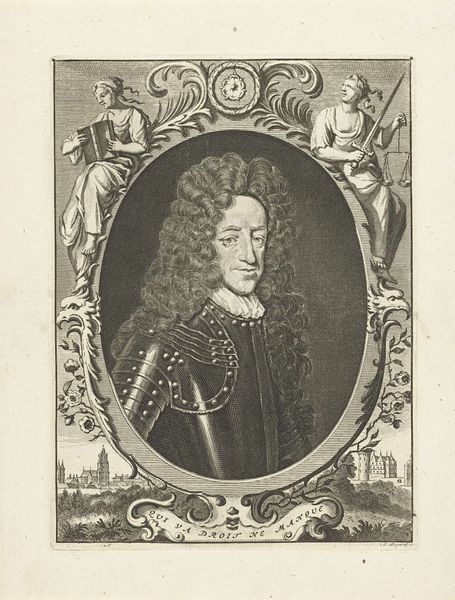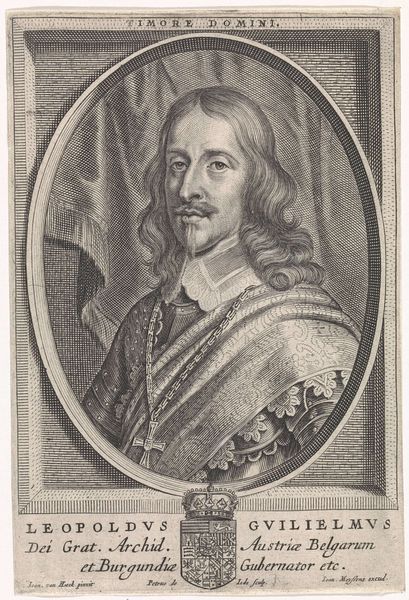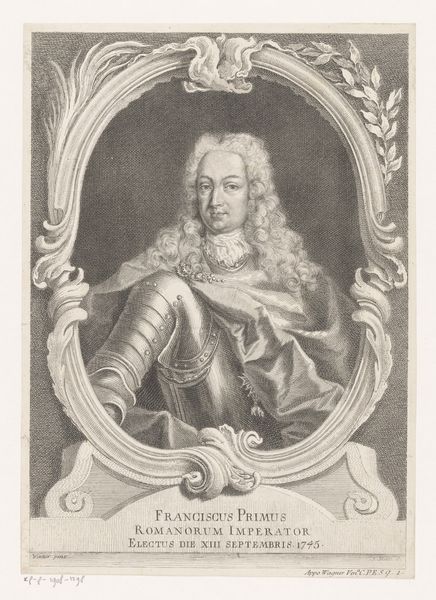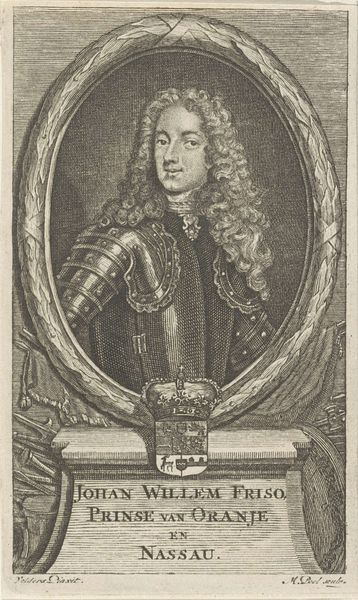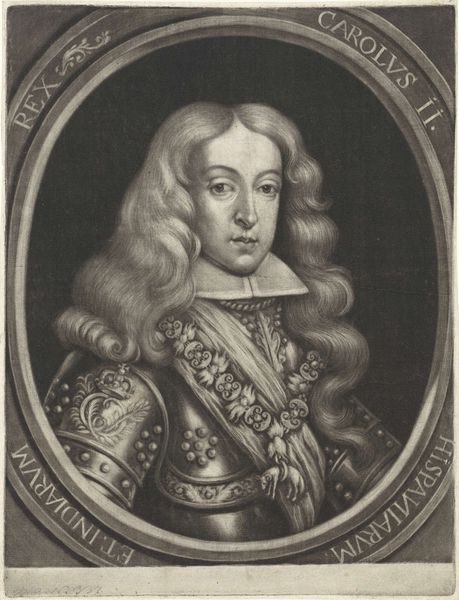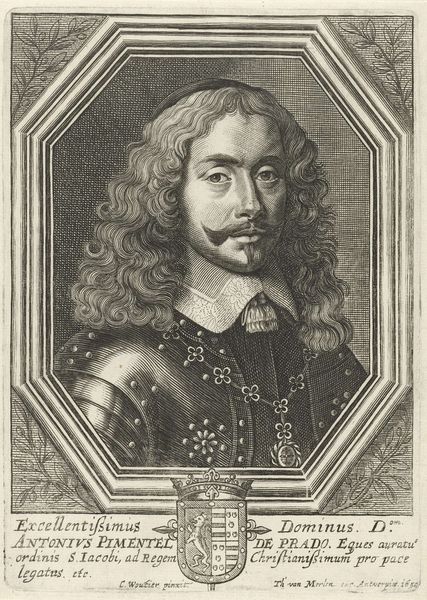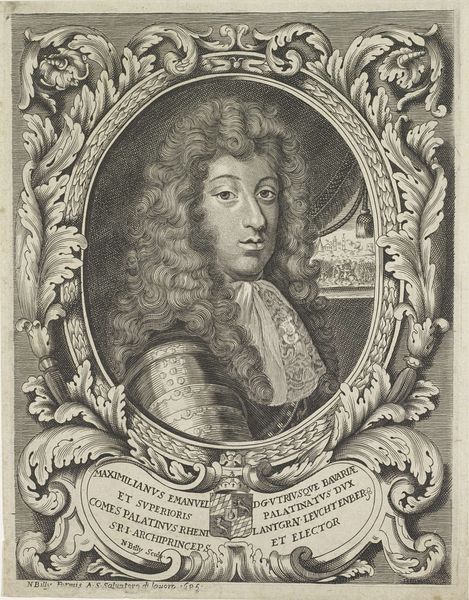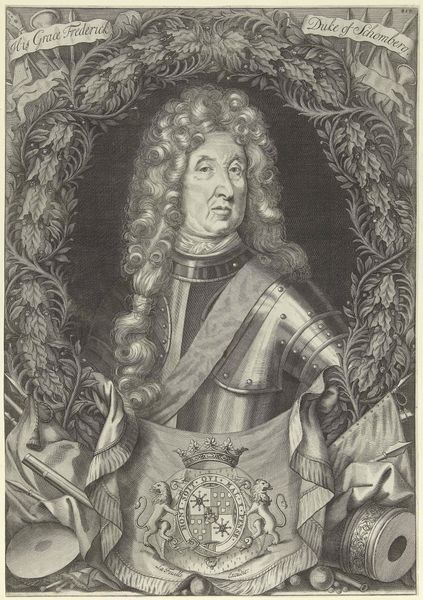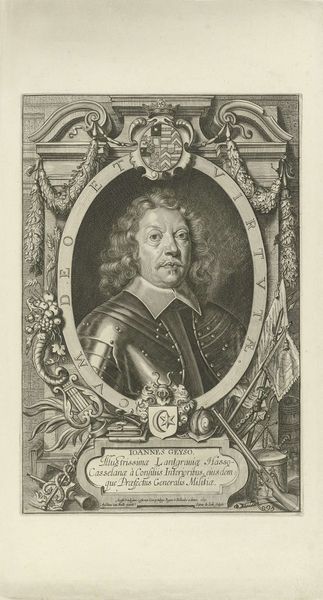
engraving
#
portrait
#
baroque
#
figuration
#
line
#
history-painting
#
academic-art
#
engraving
Dimensions: height 313 mm, width 202 mm
Copyright: Rijks Museum: Open Domain
Pieter de Jode II made this portrait of Benedictus Oxenstierna using engraving, a printmaking technique dependent on the skilled use of the burin. The burin is a steel tool used to incise lines into a metal plate. It requires immense control, as the depth and angle determine the quality of the line. This intaglio process creates fine lines, seen in the details of Oxenstierna’s face and clothing, and the allegorical elements surrounding him. Engraving emerged alongside the rise of print culture and capitalism. It allowed for the mass production of images, disseminating information and propaganda, and fostering a visual culture accessible beyond the elite. Look closely and you can appreciate the engraver's labor. The density of lines creates tone and texture. The way the light falls across Oxenstierna’s face, and the patterns of his clothing, all result from the engraver's dedication. By appreciating the material process, we understand this portrait not just as an image of a man, but as a product of skill, labor, and the burgeoning world of mass media.
Comments
No comments
Be the first to comment and join the conversation on the ultimate creative platform.
